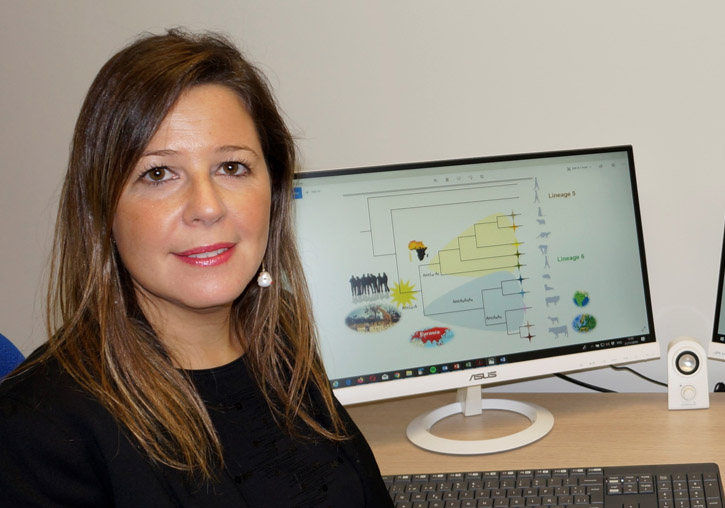A study on tuberculosis in Africa reveals a new lineage in the eastern part of the continent
- Scientific Culture and Innovation Unit
- April 16th, 2021

Mireia Coscollá, a researcher at the Institute for Integrative Systems Biology (I2SysBio), a joint centre of the University of Valencia and the Spanish National Research Council, has led a study on the bacterium that causes tuberculosis, one of the 10 deadliest diseases in the world, and in which it demonstrates the existence of a new lineage. After analysing 675 African genomes, in an article published in the journal Microbial Genomics he concludes that the new lineage, named L9, is located mainly in the eastern part of the continent.
The objective of this research has been to expand the information on the genetics, phylogeography and evolutionary history of M. africanum, one of the groups into which the bacteria of the species Mycobacterium tuberculosis are divided. This bacterium was the cause of more deaths than any other infectious disease until SARS-CoV-2 appeared and is among the top ten causes of death worldwide, especially in Sub-Saharan Africa. In this area, the most widespread lineages that cause this disease are lineage 5 (L5) and lineage 6 (L6), of which there is still not much information compared to the more widespread lineages in Europe, North America and Asia.
The novelty of the research, in which Paula Ruiz has also participated on the part of the I2SysBio, has come when, in addition to the expected lineages 5 and 6 of M. africanum, they have discovered a new one that shares similarities with L6, but with a distribution geographic difference from the rest of the African variants, in addition to a substantial genetic separation. This new variant, which they propose to call Lineage 9 (L9), is present only in samples originating from East Africa, while the vast majority of L5 and L6 genomes came from West Africa and Central Africa.
Mireia Coscollá, Ramón y Cajal researcher, has highlighted the importance of genetic diversity studies of M. africanum, since a large part of the studies dedicated to this disease are focused on Europe and North America, while Africa is much less studied. She states: “a good understanding of the populations of any organism goes through knowing all its populations, especially in the case of M. tuberculosis in Africa, where the infection caused by this pathogen hits very hard and cannot be ignored”.
Another objective of the research has been to use the genome to infer the resistance of the L5 sublineage to some antibiotics, an aspect that had been shown in previous studies with smaller and less diverse data sets, but which is not confirmed with larger data.
This research has had the support and funding of the Ramón y Cajal program of the Ministry of Science, Innovation and Universities, the European Society for Clinical Microbiology and Infectious Diseases (ESCMID), whose body has awarded the research award to Mireia Coscollá; the Ministry of Education of the Valencian Government, the Swiss National Foundation for Science, the European Research Council and Wellcome.
Article: Coscollá et al. «Phylogenomics of Mycobacterium africanum reveals a new lineage and a complex evolutionary history». Microbial Genomics 2021;7:000477. DOI: 10.1099/mgen.0.000477. Link: https://ir.uv.es/AyOF6bu
















